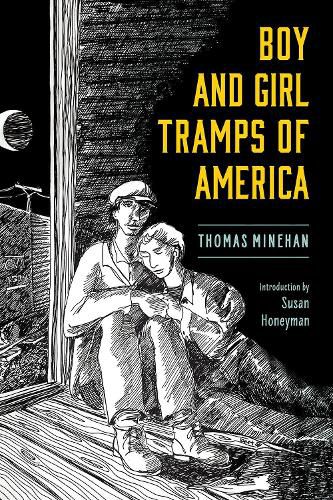Readings Newsletter
Become a Readings Member to make your shopping experience even easier.
Sign in or sign up for free!
You’re not far away from qualifying for FREE standard shipping within Australia
You’ve qualified for FREE standard shipping within Australia
The cart is loading…






This title is printed to order. This book may have been self-published. If so, we cannot guarantee the quality of the content. In the main most books will have gone through the editing process however some may not. We therefore suggest that you be aware of this before ordering this book. If in doubt check either the author or publisher’s details as we are unable to accept any returns unless they are faulty. Please contact us if you have any questions.
In 1933 and 1934, Thomas Minehan, a young sociologist at the University of Minnesota, joined the ranks of a roving army of 250,000 boys and girls torn from their homes during the Great Depression. Disguised in old clothes, he hopped freight trains crisscrossing six midwestern states. While undercover, Minehan associated on terms of social equality with several thousand transients, collecting five hundred life histories of the young migrants. The result was a vivid and intimate portrayal of a harrowing existence, one in which young people suffered some of the deadliest blows of the economic disaster.
Boy and Girl Tramps of America reveals the poignant experiences of American youth who were sent out on the road by grinding poverty, shattered family relationships, and financially strapped schools that locked their doors. For these young people, danger was a constant companion that could turn deadly in an instant. The book documents the hunger and hardships these youth faced, capturing an appalling spectacle and social problem in America’s history before any effort was made to meet the problem on a nationwide basis by the federal government.
Boy and Girl Tramps of America is a work unique in its ability to extend beyond statistical analyses to uncover the opinions, ideas, and attitudes of the boxcar boys and girls. Originally published in 1934, it remains highly relevant to the turbulent moments of the twenty-first century. This reprint features an introduction by scholar Susan Honeyman that puts the work into our current context.
$9.00 standard shipping within Australia
FREE standard shipping within Australia for orders over $100.00
Express & International shipping calculated at checkout
This title is printed to order. This book may have been self-published. If so, we cannot guarantee the quality of the content. In the main most books will have gone through the editing process however some may not. We therefore suggest that you be aware of this before ordering this book. If in doubt check either the author or publisher’s details as we are unable to accept any returns unless they are faulty. Please contact us if you have any questions.
In 1933 and 1934, Thomas Minehan, a young sociologist at the University of Minnesota, joined the ranks of a roving army of 250,000 boys and girls torn from their homes during the Great Depression. Disguised in old clothes, he hopped freight trains crisscrossing six midwestern states. While undercover, Minehan associated on terms of social equality with several thousand transients, collecting five hundred life histories of the young migrants. The result was a vivid and intimate portrayal of a harrowing existence, one in which young people suffered some of the deadliest blows of the economic disaster.
Boy and Girl Tramps of America reveals the poignant experiences of American youth who were sent out on the road by grinding poverty, shattered family relationships, and financially strapped schools that locked their doors. For these young people, danger was a constant companion that could turn deadly in an instant. The book documents the hunger and hardships these youth faced, capturing an appalling spectacle and social problem in America’s history before any effort was made to meet the problem on a nationwide basis by the federal government.
Boy and Girl Tramps of America is a work unique in its ability to extend beyond statistical analyses to uncover the opinions, ideas, and attitudes of the boxcar boys and girls. Originally published in 1934, it remains highly relevant to the turbulent moments of the twenty-first century. This reprint features an introduction by scholar Susan Honeyman that puts the work into our current context.